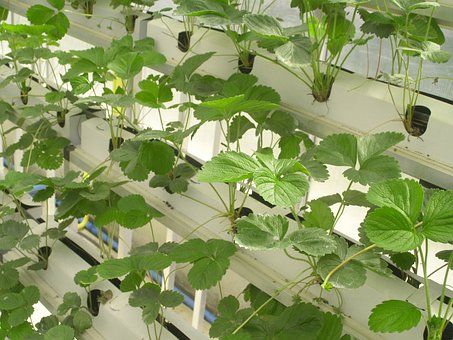Hydroponics Industry: The hydroponics method uses mineral supplements to grow plants in water without soil. Plants are watered by fluid performance, which is created by hydroponic agriculture. Additionally, the supplements are recurrently provided to the plants. The plants’ developing climate is controlled solely by hydroponic cultivation. Mixed farming also uses this technique of farming. There is a good deal of automation in the framework, obviously, but it also needs to be closely monitored. Hydroponic farming in India is what we are here to show you. Take a look at the list below.
Farming / System Types of Hydroponics
Are you going to grow your veggies in your kitchen corner, back garden, or yard? Your dreams will come true with the well-known hydroponics technique for vertical farming. There is no soil used in the framework, instead, rock wool, perlite, mud pellets, or peat greenery support the roots. Due to the fact that there are upwards of six conclusions, you will be spoilt for choice. Depending on your space and the plants you are raising, some frameworks shine more than others. We will outline the 6 main types of hydroponic systems in a short time.
1. Aeroponics System
Do you remember a time when vegetables seemed to grow out of nowhere? We will discuss an aeroponic framework in this article. A supplement-loaded mist is fed to the plants by this framework. Coco coir is used to hold the roots in a soilless environment. To develop plants, supplemented water must be intermittently siphoned.
Despite its modern and technological nature, the strategy has been under development for some time now. Plants receive supplements through a line framework. Performance is delivered to roots through the spouts of the line. Other than breathing openly, the seeds will receive supplements and dampness.
2. Nutrient Film Technique
Any of the hydroponic farming systems you used had air circulation issues? That issue will be resolved by the supplement film method or NFT. You can use NFT to introduce a dainty arrangement film at the foundation of a tank. Roots will receive water and nourishment while the upper part will relax. Don’t worry if you see the roots mop-squeezed since they’re intended to look like that.
Specifically, the developing tank should not be completely level. It should instead have a slight point. In addition, the arrangement won’t stream away excessively quickly due to the slight slant of the tank.
3. Drip Hydroponic System
The dribble framework is undoubtedly one of the most dynamic vertical hydroponic farming techniques. Water and supplements are continuously supplied to the plants with a pump. Little producers are utilized in hydroponic farming to sprinkle supplements directly onto the plants. By providing steady watering and nourishment with the hoses, lines, and growing media, it serves as a shelter for the tremendous problem of air circulation.
4. Ebb and Flow
Ebb and Flow frameworks place plants in extensive development beds. The bed is filled with a developing medium such as perlite or rockwool. The development bed will be flooded with supplements after the plants have been painstakingly established. Pure organic farming is practiced here. Routinely flooding the roots for shorter periods of time is the goal of this framework.
5. Wick Hydroponic System
One of the most oversimplified hydroponic farming frameworks must be the wick framework. It does not require aerators, siphons, or electricity. It is the only latent framework that can be operated without electricity among the various tank-farming frameworks.
6. Deep Water Culture
In spite of the fact that the Deep Water Culture framework works for a wide variety of plants, it is best for plants that have large roots, particularly those with large roots. With this framework, the plants are suspended in a supplement arrangement, and an air diffuser or air stone is utilized to supply the air. To get the plants, you need to put them in net pots with a mode for growth. You will see your plants grow insanely if you allow them to sit in oxygen-rich supplements.
Global Hydroponics Market Trends
Commercial hydroponic
The value of farming, estimated at USD 9.5 billion in 2020, is projected to grow at a CAGR of 11.3% to reach USD 17.9 billion by 2026. In order to satisfy the growing demand for grains and food, the horticulture industry looks for high-yielding cultivation practices, such as precision cultivation and urban cultivation. As food security concerns grow, hydroponic vertical farming may offer a solution. The Indian commercial farming industry has become increasingly popular and profitable in recent years.
The impact of Coronavirus on the global hydroponics market
People have increasingly embraced open-air food as a result of the Covid-19 pandemic. The population around the globe is increasingly focusing on food safety and home cooking, and making their own meals. It has put the food and inn industries at risk. Vertical farming hydroponic frameworks have been assessed to rise rapidly after the impact of Covid-19 on agriculture.
How to Start Hydroponic Farming in India
The process of hydroponic farming in your backyard can be broken down into three steps. Below you will find information about starting a hydroponic farm.
1. Hydroponic Raft
Hydroponic rafts are a great way to grow plants. You don’t need much expertise to make it, it doesn’t cost much to get started, and it will yield vegetables much faster than standard cultivation methods.
2. Vertical Hydroponics
Nursery workers who lack space can take advantage of vertical hydroponic frameworks. Your hydroponics framework can be green if you use recycled materials to assemble it.
3. Aquaponics
Your home or small corner garden can be transformed into a flourishing aquaponic farm for vegetables and fish with ease. Aquaponics combines hydroponics and aquaculture by using fish wastes as manure for crops in a cooperative environment. Compost and pesticides are not required because the framework is usually encased.
The benefits of hydroponic farming in India
Hydroponic farming business plans in India have the following 5 advantages. Check it out.
1. Space Utilization
The area required by a hydroponic plantation is smaller than that of a soil-grown plantation. Accordingly, when hydroponic vegetable farming is combined with vertical cultivation strategies, approximately 100% less ground can be utilized than with traditional cultivation methods.
2. Labor Costs are Reduced
Farmers who use hydroponics farming have fewer tasks to perform, such as plowing, herbicide, weeding, and insect poison application. The task can undoubtedly be accomplished in a much shorter amount of time. As a result, harvesting costs are reduced and more time can be spent on other activities. It is possible for a single low-maintenance worker to oversee a little hydroponic farming.
3. Soil-free
It is estimated that the world is losing useful soil at an alarming rate. There has been a loss of land worldwide over the past 150 years, according to some estimates. There are several causes for this, including disintegration, compaction, loss of soil structure, supplement corruption, and saltiness. In the new hydroponic technology, the soil isn’t a concern, so farmers don’t have to worry about soil degradation when growing crops.
4. Faster growth of crops
The plant is able to absorb supplements more effectively with hydroponic farming. Besides light, heat, supplements, hydration, and bugs, the cultivator can handle the rest of the system development. With a smoother cycle, bigger, more rapidly developing plants can produce a better return on investment.
5. Produces Quality Food
Aged food usually contains more nutrients and has a better taste too. Hydroponics can produce harvests pretty much anywhere since microbiomes are contained in the growing medium. Consequently, they picked when they were at their peak.
Setup costs for hydroponic farming in India
If land is not included in the cost, the last cost of setting up commercial hydroponic farming in India will be Rs. 110 lakhs to Rs. 150 lakhs. Technology and innovation determine this expense.
What is the profitability of hydroponic farming in India?
Hydroponic farming has reached an all-time high. A total of 19 ventures have been launched in seven states or 13 city districts in India, and they are likewise providing services and administrations to over 30 farmers and business cultivators in India.
Which are the Most Profitable Hydroponic Crops to Grow?
The following are the most profitable crops for commercial hydroponic farming in India. Have a look down below:
- Microgreens
- Lettuce
- Radishes
- Sweet Bell Peppers
- Herbs
- Flowers
Hydroponic Farming Training Centers in India
Check out below the most popular hydroponic farming training centers in India.
-
Horticulture Technology Institute (Delhi)
-
Farms of Kamala (Hyderabad)
-
Living Greens Organics Pvt. Ltd. (Jaipur)
-
Management and Extension of Agriculture in Bihar (Patna)
-
Brio Hydroponics (A Unit Of Brio Agri Producer Company Ltd. (Ahmedabad)
-
Bellesiri – Hydroponics Training & Consultant (Bengaluru)
-
Tichxelons Agrotech. Techxellance Solutions Pvt Ltd. (Mumbai)
Hydroponic farming in India is explained in detail in this article. It is my hope that you get all the details regarding the same. Aarug Agro will keep you updated.


